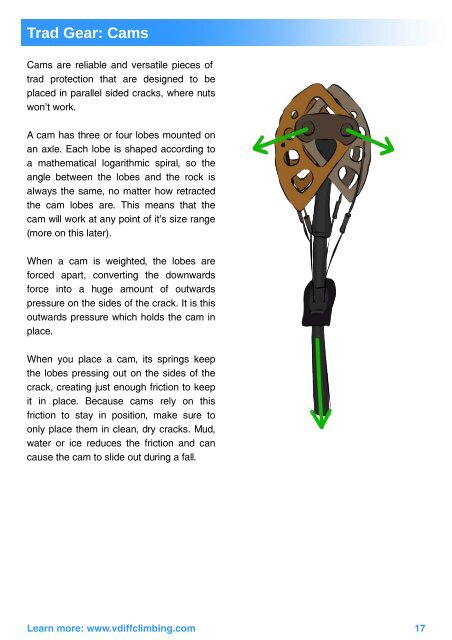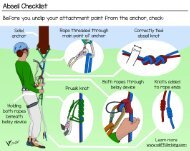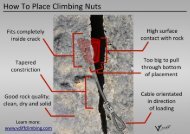Trad Climbing Basics - VDiff Climbing
This e-book will teach you how to: - Place cams, nuts and other trad climbing gear - Build trad anchors - Use different belay methods (including guide mode) - Equalize and extend gear effectively - Understand forces on climbing gear - Abseil safely (including using a prusik knot) - Climb with half ropes - Test rock quality - Prepare for your first trad lead Plus much more. Further information: * Perfect for those who want to start trad climbing. * 200+ accurately drawn, full-colour illustrations. * Step-by-step climbing techniques explained in a beginner friendly way. * Updated December 2017
This e-book will teach you how to:
- Place cams, nuts and other trad climbing gear
- Build trad anchors
- Use different belay methods (including guide mode)
- Equalize and extend gear effectively
- Understand forces on climbing gear
- Abseil safely (including using a prusik knot)
- Climb with half ropes
- Test rock quality
- Prepare for your first trad lead
Plus much more.
Further information:
* Perfect for those who want to start trad climbing.
* 200+ accurately drawn, full-colour illustrations.
* Step-by-step climbing techniques explained in a beginner friendly way.
* Updated December 2017
Create successful ePaper yourself
Turn your PDF publications into a flip-book with our unique Google optimized e-Paper software.
<strong>Trad</strong> Gear: Cams<br />
Cams are reliable and versatile pieces of<br />
trad protection that are designed to be<br />
placed in parallel sided cracks, where nuts<br />
won't work.<br />
A cam has three or four lobes mounted on<br />
an axle. Each lobe is shaped according to<br />
a mathematical logarithmic spiral, so the<br />
angle between the lobes and the rock is<br />
always the same, no matter how retracted<br />
the cam lobes are. This means that the<br />
cam will work at any point of it's size range<br />
(more on this later).<br />
When a cam is weighted, the lobes are<br />
forced apart, converting the downwards<br />
force into a huge amount of outwards<br />
pressure on the sides of the crack. It is this<br />
outwards pressure which holds the cam in<br />
place.<br />
When you place a cam, its springs keep<br />
the lobes pressing out on the sides of the<br />
crack, creating just enough friction to keep<br />
it in place. Because cams rely on this<br />
friction to stay in position, make sure to<br />
only place them in clean, dry cracks. Mud,<br />
water or ice reduces the friction and can<br />
cause the cam to slide out during a fall.<br />
Learn more: www.vdiffclimbing.com<br />
17






